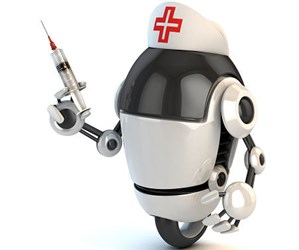Drone Prototype Can Help Save Heart Attack Victims

By Christine Kern, contributing writer

A graduate student in the Netherlands has created an ambulance drone fitted with a defibrillator.
Heart attack care might be as close as the sky above your house. An ambulance drone designed by Alec Momont can fly at 60 miles per hour and deliver a defibrillator to patients in a matter of minutes, according to NDTV.
Momont, a graduate student at Delft University of Technology’s Faculty of Industrial Design Engineering, designed the drone as part of his program. Geek.com writes Momont’s drone is a hexacopter painted in emergency services yellow.
The drone works like this: When a cardiac emergency call comes into the 911 center, an unmanned drone is sent out using GPS and the caller’s mobile phone signals to locate the emergency scene and deliver a defibrillator which is built into the drone itself. Once the drone lands, a panel is opened up and the defibrillator paddles are removed. Then, using live-stream audio and video, the patient and others at the scene can communicate with emergency services personnel to direct treatment and use of the defibrillator. The drone includes a defibrillator which is capable of delivering up to 50 shocks.
Momont says a network of 3,000 drones could cover the Netherlands, with each drone responding to 12 square kilometers within a minute. Drones could be stationed on telephone poles for fastest response times. Since ambulance response time in the Netherlands almost 10 minutes, drones would provide a significant improvement and likely save lives.
Momont told NDTV, "It is essential that the right medical care is provided within the first few minutes of a cardiac arrest. If we can get to an emergency scene faster we can save many lives and facilitate the recovery of many patients. This especially applies to emergencies such as heart failure, drownings, traumas and respiratory problems. It has become possible because of life-saving technologies, such as a defibrillator which can now be designed small enough to be transported by a drone.”
According to The Washington Post, Momont’s project is still in the early stages and has not yet undergone trials on humans. It could also prove to be cost-prohibitive in the long run. It is, however, an indication of the potential of drones in a wide variety of scenarios, as the Post points out, stating that the U.S. is largely missing out on this potential, with the FAA slow to provide guidelines for commercial use of drones.
And according to Geek.com, Momont says drones can be equipped with much more than just a defibrillator. He envisions future versions of the ambulance drone with a full site of medical supplies such as an oxygen mask, EpiPen, and insulin injectors. Whether or not such medical treatment delivery is economically feasible is a question yet to be determined, and another obstacle remains the FAA approval for drone use in the U. S.
